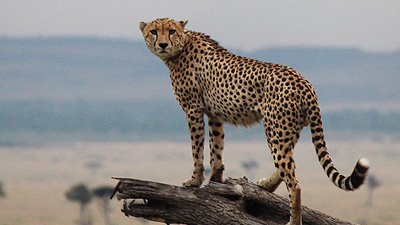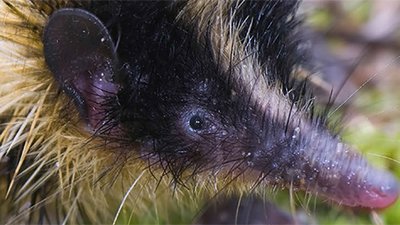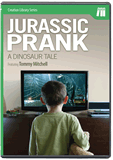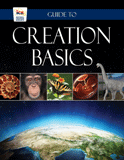
Jurassic Rat Now Considered Oldest Mammalian Ancestor
Once upon a time, in a Jurassic park long, long ago, grandmother rat climbed a tree.
News Source
Dr. Zhe-Xi Luo of the Carnegie Museum has done it again. Specializing in early mammalian evolution, he has just published an analysis of Juramaia sinensis, the latest “jewel among the spectacular treasure chest of the Chinese fossil record.” The half-ounce fur-ball’s name says it all: Juramaia sinensis means “Jurassic mother from China.”1
Paleontologists around the world are excited about this fossil because of its apparent age—160.7 million years based on argon dating of nearby rocks. The critter’s teeth are typical of those found in placental mammals. (Structures like pouches haven’t shown up in fossils, but living marsupials have more teeth than placentals.) The previous placental record holder (Eomaia-“dawn mother”) dates 35 million years younger, so Dr. Luo says that this discovery “puts down a new evolutionary milestone for the origin of placental mammals.”2
In paleontology, older is generally better. In this case the excitement goes further because the dates on Juramaia correlate with a 2007 molecular clock calculation of 147.7 million years3 for the appearance of placental mammals and an even more appealing 2009 calculation of 143–178 million years with a median value of 160 million.4 Since 160 million and 160.7 million match so beautifully, evolutionary paleontologists are delighted with these findings.
Previous molecular clock calculations put the divergence of placentals from marsupials at about 122–125 million years ago, closely matching Eomaia’s dates. Another molecular clock analysis in 20075 dated the divergence even more recently (84 million years ago). But those who accept the earlier dating are undisturbed. From their point of view, the new Jurassic mother is just more grandmotherly, being a reasonable candidate for the common ancestor of both marsupials and placentals. As Robert Asher of Cambridge said, ““One possible alternative interpretation is that Juramaia represents an animal close to the common ancestor of marsupials and placentals, but one that is neither eutherian [placental] or metatherian (the stem group of marsupials). That would leave the previous eutherian record and calibration date of 125 million years ago intact.”6
Since the fossil’s long toes resemble those of modern tree-climbers,8 Dr. Luo believes he has pieced together the story of how early mammals managed to thrive amongst the Jurassic dinosaurs.
Since the fossil’s long toes resemble those of modern tree-climbers,7 Dr. Luo believes he has pieced together the story of how early mammals managed to thrive amongst the Jurassic dinosaurs. He says, “The divergence of eutherian mammals from marsupials eventually led to placental birth and reproduction that are so crucial for the evolutionary success of placentals. But it is their early adaptation to exploit niches on the tree that paved their way toward this success.” There he believes the placental mammals bided their time until the dinosaurs became extinct 95 million years later and left the earth’s terrestrial ecosystems wide-open for mammalian domination.
Marsupials can have a rudimentary placenta before birthing their immature young, so evolutionists assume placentals and marsupials shared a common ancestor. Using the fossil record and molecular clocks to come up with a date for this event has been a priority for evolutionists.
Molecular clocks are built upon circular reasoning and the presupposition that existence of some shared genes implies common ancestry. The assumptions are:
- that mutations accumulate to produce new kinds of creatures,
- that the radiometric dates assigned to the fossil record are accurate, and
- that creatures in the fossil record evolved into one another.
Results vary depending on the statistical method and the particular set of assumptions. As authors of the 2009 study note, “Calibration [of molecular clocks] remains a contentious aspect of molecular dating, with unavoidable subjectivity in the number and choice of calibration nodes and the nature of the constraints applied to the chosen nodes.”8
So has Dr. Luo discovered the Jurassic ancestor of placental mammals? No. He has analyzed the fossil of a creature whose teeth and possibly fossilized hairs suggest it was a placental mammal. The radiometric dating methods used to date the nearby rocks are fraught with their own unprovable assumptions.9 And because all organisms had a Common Designer and many share common designs, it is no surprise that some genes show up in multiple organisms.
Those committed to an evolutionary worldview are excited about this discovery because the radiometric dates of the neighborhood rocks match one of the many sets of molecular dates to emerge in recent years. Modern people are generally very impressed with the aura of accuracy that accompanies anything with numerical data attached—even if the data can be selected from a range of available choices in order to match the presuppositional needs of the moment.
Further Reading
- Radiometric Dating: Back to Basics
- Radiometric Dating: Problems with the Assumptions
- Radiometric Dating: Making Sense of the Patterns
For More Information: Get Answers
Remember, if you see a news story that might merit some attention, let us know about it! (Note: if the story originates from the Associated Press, FOX News, MSNBC, the New York Times, or another major national media outlet, we will most likely have already heard about it.) And thanks to all of our readers who have submitted great news tips to us. If you didn’t catch all the latest News to Know, why not take a look to see what you’ve missed?
(Please note that links will take you directly to the source. Answers in Genesis is not responsible for content on the websites to which we refer. For more information, please see our Privacy Policy.)
Footnotes
- John Roach, “Dino-era Mammal the ‘Jurassic Mother’ of Us All?,” National Geographic, August 26, 2011, http://news.nationalgeographic.com/news/2011/08/110824-placental-mammal-shrew-fossil-earliest-ancestor-evolution-science.
- Brian Switek, “‘Jurassic Mother’ Found in China,” Science, August 24, 2011, http://www.sciencemag.org/news/2011/08/jurassic-mother-found-china.
- Olaf R. P. Beininda-Emonds et al., “The Delayed Rise of Present-day Mammals,” Nature 446 (March 29, 2007): 507–512, doi:10.1038/nature05634.
- Matthew J. Phillips, Thomas H. Bennett, and Michael S. Y. Lee, “Molecules, Morphology, and Ecology Indicate a Recent, Amphibious Ancestry for Echidnas,” PNAS 106, no. 40 (October 6, 2009): 17089–17094, doi:10.1073/pnas.0904649106.
- Yasuhiro Kitazoe et al., “Robust Time Estimation Reconciles Views of the Antiquity of Placental Mammals,” PLoS ONE 2, no. 4 (April 18, 2007): doi:10.1371/journal.pone.0000384.
- Jennifer Viegas, “‘Jurassic Mother’ Found in China,” Discovery News, August 24, 2011, http://www.seeker.com/jurassic-mother-found-in-china-1765382618.html.
- Zhe-Xi Luo, Chong-Xi Yuan, Qing-Jin Meng, and Qiang Ji, “A Jurassic Eutherian Mammal and Divergence of Marsupials and Placentals,” Nature 476 (August 25, 2011): 442–445, doi:10.1038/nature10291.
- Phillips, Bennett, and Lee, “Molecules, Morphology, and Ecology Indicate a Recent, Amphibious Ancestry for Echidnas,” supplemental materials page 1.
- See “Radiometric Dating: Back to Basics,” “Radiometric Dating: Problems with the Assumptions,” and “Radiometric Dating: Making Sense of the Patterns.”
Recommended Resources

Answers in Genesis is an apologetics ministry, dedicated to helping Christians defend their faith and proclaim the good news of Jesus Christ.
- Customer Service 800.778.3390
- © 2024 Answers in Genesis







